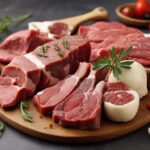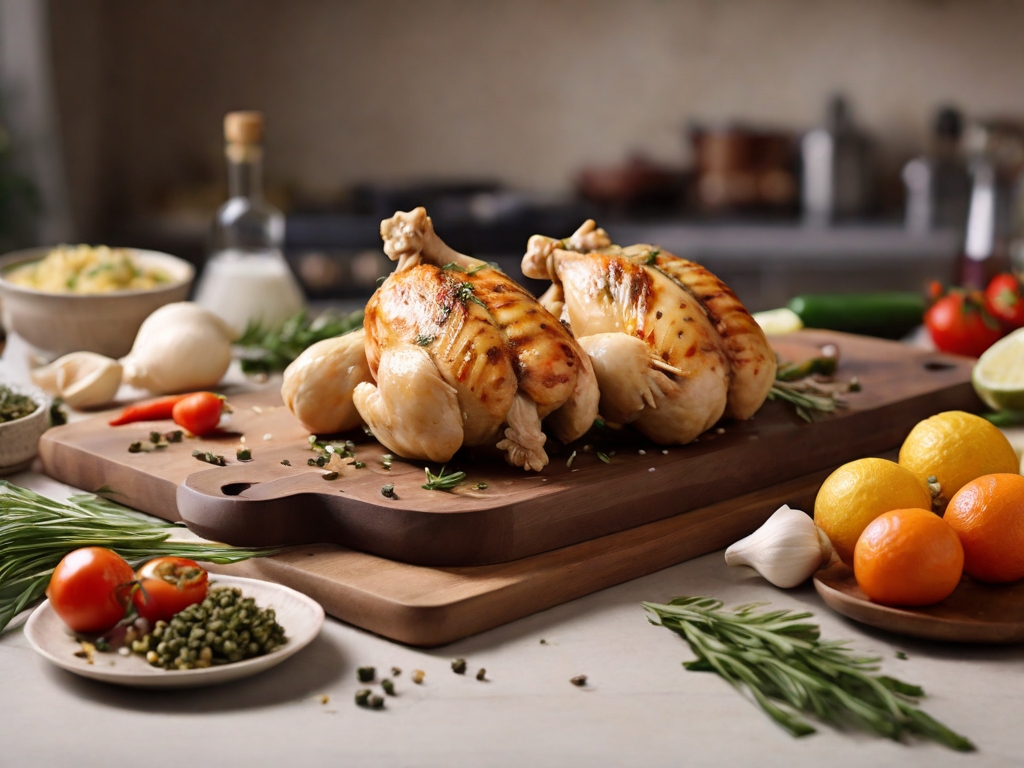Selecting the right poultry is crucial to ensuring the success of your culinary creations. From chicken and turkey to duck and quail, each type of bird has its own characteristics and qualities that affect its flavor, texture, and versatility in the kitchen. In this article, we’ll provide you with a comprehensive guide on how to choose the best poultry for your dishes, from selecting them at the store to tips for their preparation and cooking.
Choosing the Best Poultry
Product Freshness
When buying poultry, check the freshness of the product. Look for pieces that appear fresh and colorful, avoiding those showing signs of discoloration or decomposition. The skin should be intact and free of blemishes, and the meat should feel firm to the touch.
Origin and Provenance
Preferably, opt for locally sourced or organically and sustainably raised poultry. Information about the origin and provenance of the product can give you clues about its quality and whether it has been ethically raised.
Size and Weight
Consider the size and weight of the bird in relation to your culinary needs. Choose larger pieces to feed more people or for recipes that require more meat, and smaller pieces for individual portions or specific recipes.
Skin Appearance and Fat
Observe the bird’s skin for signs of fat and moisture. A shiny skin with evenly distributed fat may indicate a juicier and more flavorful bird. However, avoid birds with excess fat, as they can end up too greasy when cooked.
Fresh and Pleasant Odor
Fresh poultry should have a mild and pleasant odor, with no signs of rot or rancidity. Trust your sense of smell to detect any unpleasant odor that may indicate product spoilage.
Preparation and Cooking Tips
Once you have selected the right poultry, it is important to prepare and cook it properly to enhance its flavor and texture. Here are some helpful tips:
- Marinating the bird before cooking can enhance its flavor and make it more tender.
- Cook poultry at the recommended temperature and time to avoid drying out or overcooking.
- Experiment with different cooking methods, such as roasting, baking, frying, or grilling, to discover new ways to enjoy your favorite poultry.
Conclusion
Choosing the best poultry for your recipes is an important skill in the kitchen. By paying attention to the freshness of the product, its origin, size, skin appearance and fat, as well as its odor, you can select high-quality poultry that will enhance your dishes and delight your diners. With the right tips for preparation and cooking, you can make the most of these delicious and versatile proteins. Enjoy experimenting in the kitchen and discovering new ways to incorporate poultry into your meals!
More content
- Gastronomía egipcia: dieta y recetas ancestrales

- Comida Callejera en el Mundo: Historia y Platos Típicos

- Historia del Chocolate: De los Aztecas al Presente

- Culinary Globalization: Exploring 6 Iconic World Dishes

- Sustainable Dishes: Gastronomic Trends for a Greener Future

- The Most Impactful Gastronomic Trends Shaping the World

- Myths and Legends: The Magical Stories Behind Foods

- Symbolism of Food: The Meaning in Every Bite

- Iconic Dishes of Spanish Cuisine by Region

- Exploring Flavors: Top 10 Typical Dishes of Latin America

- Perfect Pairing: Wines and Dishes for Gastronomic Celebrations

- Title: Culinary Traditions in Festivals: Festive Flavors of the World

- Gastronomy and Folklore: Culinary Traditions and Local Myths

- Culinary Journey: Discovering Culinary Traditions from Different Cultures

- Healthy and Affordable Recipes: Eating Well Without Spending Much

- Healthy Breakfasts: 7 Nutritious Recipes for the Whole Week

- Probiotic Foods: How Do They Improve Your Digestive Health?

- Boost Your Immune System: The Best 10 Foods

- 6 Healthy Recipes for a Balanced and Delicious Diet

- 15 Foods to Maintain a Balanced and Nutritious Diet

- Menus for Allergen-Free Diets: The Best Recipes and Nutritional Strategies

- Dietary Plans for Food Allergies: Top 10 Tips and Recommendations

- Low-Carb Diets: Top 10 Recommended Foods

- Low-Carb Diet: A Beginner’s Guide

- Easy Gluten-Free Recipes for Every Day of the Week

- Complete Guide to Gluten-Free Diets: Tips for Beginners

- Protein Sources in a Vegan Diet: What to Do?

- Vegetarianism for Beginners: Simple Steps to Adopt This Lifestyle

- Taste the Best of Africa: Top 5 Iconic Regional Recipes

- The Secrets of African Cuisine: Traditional Recipes and Flavors

- 10 Latin American Sweets: Tempting Dessert Adventures Await

- Secrets of Latin American Cuisine: Traditional and Authentic Recipes You Must Try

- Taste of the Mediterranean: 5 Key Dishes

- Simple Mediterranean Cooking for Beginners: Impress Your Guests!

- Homemade Sushi: Simple Steps to Prepare Your Favorite Rolls

- Secrets of Asian Cuisine: Discovering 8 Traditional Techniques

- Innovation in Cuisine: Gourmet Products in Traditional Recipes

- The 10 Most Exclusive Gourmet Products You Must Try

- White Fish vs. Blue Fish: Which is Better for Your Health?

- The Secrets of Perfect Seafood Cooking: Kitchen Tricks

- How to Choose the Best Poultry for Your Recipes

- From Farm to Table: How to Select Quality Meat

- Complete Guide: Enhance Your Dishes with Fresh Herbs

- Revealing the Superfood Potential of Red Fruits: Benefits & Recipes

- Starting Out in the Kitchen: Pro Chef Tips for Beginners

- Unlock Your Culinary Potential: Beginner’s Guide to Essential Techniques

- Culinary Secrets Unveiled: Elevate Your Cooking with Simple Ingredient Tricks

- Master Your Kitchen: 10 Unexpected Tips for Easy Cooking

- Art of Fruit and Vegetable Cutting: Expert Techniques Revealed

- Efficiency Unleashed: Explore the Art of Mise en Place

- Mastering Healthy Cooking: Unveiling 4 Low-Fat Secrets

- Complete Guide to Cooking Methods: Everything You Need to Know

- From Fusion to Tradition: 4 Global Gastronomic Trends

- Culinary Innovations: The Most Impactful Gastronomic Trends

- A Gastronomic Journey: Migratory Influences in the Cuisine

- Flavors of the World: A Journey Through Diverse Culinary Influences

- The Evolution of Food: Traditional vs. Modern Cuisine Compared

- The Great Masters of Cuisine: Contributions to its Evolution

- Spices Through Time: Understanding Their Historical Importance

- 5 Great Gastronomic Moments: Historic Milestones in the Cuisine


